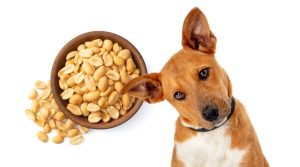Are you confused about what to feed your pet?
Picking food from the store is only one aspect of feeding your pet. Many of pet owners aren’t sure if they should feed their pets raw or processed food. Just about every choice has benefits and drawbacks. A faulty diet can affect your pet’s health, vitality, and digestion. Act wisely for a contented and healthy friend! Breed, age, and general health all affect the suggested food for your pet. You will may choose the greatest pet nutrition for your animal companion by being aware of the differences between raw and processed pet meals.
Understand Raw Pet Nutrition
What is a Raw Diet?
Unprepared meats, bones, and organs are all part of a raw diet. It may also have fruits and vegetables. Some pet owners feel this food replicates what animals consume in the wild. The idea is to offer a diet without artificial preservatives or fillers.
Benefits of Raw Diets
- Improved Coat and Skin
Many owners observe healthier-looking skin and more radiant fur coats on animals that are fed a raw diet. - Better Digestion
The absence of fillers in raw diets automatically makes these easier for some pets to digest. - Heightened Energy Levels
Alertness and activeness are two of the most common changes noted by some pets after switching to a raw diet. - Better Teeth and Gum Health
Raw bones assist in plaque control to a great extent by cleaning the teeth due to their abrasive nature when chewed.
Risks of Raw Diets
- Possibility of Contamination
Animal goods provide the greatest danger of contracting diseases like Salmonella and E. coli that can infect pets and their owners. - Imbalance in Nutrition
A failure to plan a raw diet could have serious repercussions such as a chronic deficit of necessary nutrients. - Choking Hazards
Sharp edges developed from bones as a result of breaking may result in more serious consequences such as choking or internal damage.
Understanding Processed Pet Nutrition

What Falls Under Processed Pet Food?
Dry kibble, canned food, and freeze-dried meals are all examples of processed pet diets that undergo various processes to assist them contain the necessary nutritional components.
Benefits of Processed Pet Food
- Complete and Balanced Nutrition
Most processed pet foods meet the required nutritional standards for pets. - Convenience
Packaged pet food requires no preparation and has a long shelf life. - Reduced Risk of Contamination
Unlike raw diets, processed foods undergo cooking processes that eliminate bacteria. - Affordable and Accessible
Many high-quality processed pet foods offer balanced nutrition at reasonable prices.
Risks of Processed Pet Food
- Lower Moisture Content
Most dry bites of kibble have very little moisture. This may cause dehydration in some pets. - Artificial Additives
Some processed foods may contain preservatives, colours, and flavours which will not be healthy in the long run. - Potential Allergens
Some pet foods contain grains or other fillers which predispose some pets to allergies.
Comparing Raw vs. Processed Pet Nutrition
| Factors | Raw Diet | Processed Diet |
| Nutritional Control | High (if balanced) | Standardized |
| Convenience | Requires preparation | Easy to serve |
| Safety | Risk of bacteria | Lower risk |
| Digestion | Easier for some pets | Can contain fillers |
| Cost | Can be expensive | More affordable |
Which Diet Is Best for Your Pet?

Consider Your Pet’s Needs
- Age and Activity Level
Active pets may benefit from the high protein in raw diets. Older pets may require balanced nutrition in processed food. - Health Conditions
Especially wildlife with sensitivities or digestive problems, a special diet may be required. The veterinarian should always be contacted before making any dietary changes. - Your Lifestyle
If you have time for meal prep, a raw diet may work. If convenience matters, processed pet food is a better option.
Making a Safe and Healthy Choice
Safe Practices for Handling and Cooking Raw Food
- Gentle Cooking Methods
If pre-cooking raw food is needed before serving it to your pet, an appropriate internal temperature range can be reached by putting it in an oven or sous vide. Nutrients are destroyed with an excessive amount of heat, so be careful not to overcook.. - Avoid Microwaving Raw Food
Toasting fresh meat in the microwave results in uneven cooking, which encourages the growth of some germs. Likewise, boiling or pan-frying are not recommended since they cook the meal at an excessively high temperature, destroying key nutrients and producing harmful byproducts. - Never Cook Bones
Cooked bones can splinter and pose a choking hazard. Always serve bones raw, or use them for making bone broth and discard them afterwards. - Don’t Cook Fats
Cooking raw fat can increase the risk of pancreatitis in pets. Keep fatty meats and raw fats unprocessed. - Proper Food Storage
- Raw food must be kept at temperatures lower than 15 degrees Fahrenheit, until ready for use.
- Use food within 48 hours after defrosting in the refrigerator within the 33 to 40-degree Fahrenheit range.
- Surfaces, hands and utensils should always be washed with hot, soapy water both pre and post-working with uncooked food.
- Food served mid-use should be stored in airtight containers.
Transitioning to a New Diet
Abdominal discomfort is one of the many issues that sudden switching of diets can lead to. Slowly implement the new food for 7 to 10 days by using the new food in small ratios to the old food.
Consult a Veterinarian
The professionals are always the best to guide you correctly. What may come off as a drastic change in diet for your pet should be carefully considered by an expert vet beforehand, who can understand their needs, and help you come up with a solution that is best for them.
Final Thoughts
Other than the consideration of whether a diet is raw or processed, many other factors need to be taken into account. Some pets do well by feeding solely on raw diets, yet others reap the benefits through processed diets. These considerations along with direct consultations through a veterinarian will help with making the most optimal decision regarding a pet’s health and nutrition.
Providing ultimate pet nutrition whether raw or processed, ensures longer life along with overall health for your furry friend. The most vital aspect is keeping a daily balanced, nutritious meal.